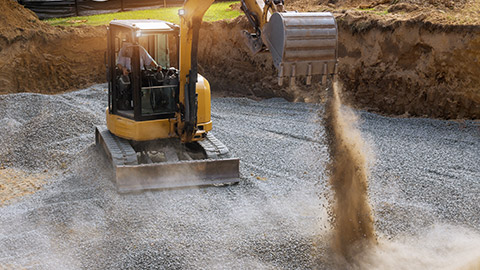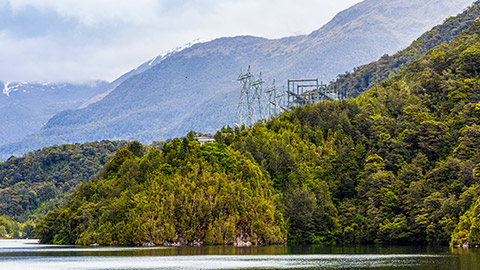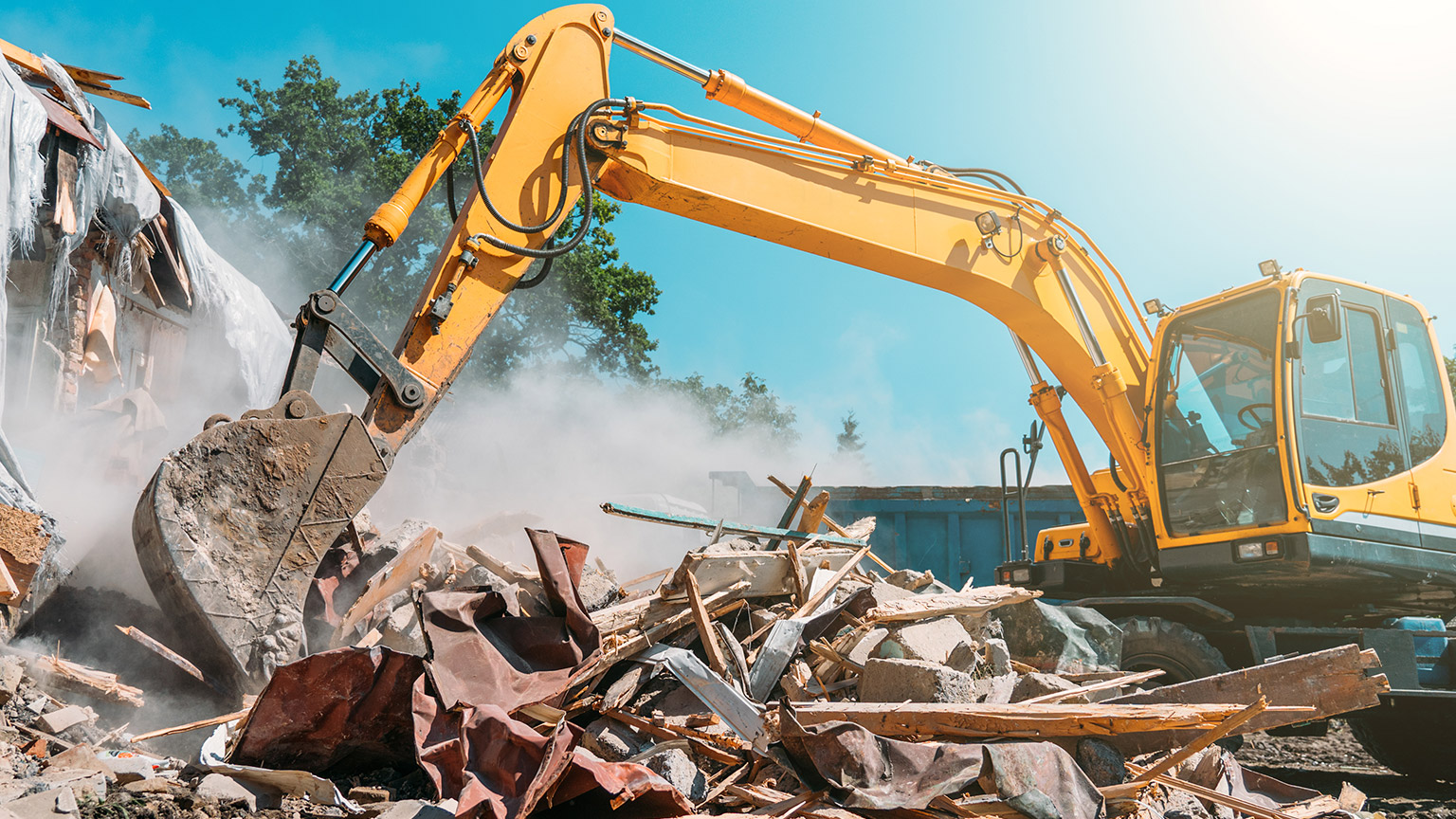The transport of materials and equipment needs to be managed to help reduce emissions in sustainable construction.
In this topic, we'll explore the specific issues facing the environment, and how our industry manages our resources (energy, water, materials) to ensure our construction practices align with New Zealand's sustainability goals.
The total building industry in New Zealand is accountable for significant energy consumption, not only during the construction phase but also throughout its operational lifespan, during which these stages emit carbon dioxide and other environmental pollutants.
The construction processes and the operation of the buildings cause these pollutants.
“In 2018, nearly 9.4 per cent of domestic emissions were building-related. These emissions are largely accounted for in the energy, industry, transport, and waste sectors. For example, they include:
- emissions from the energy and other resources used when operating a building,
- the carbon emitted in Aotearoa by the manufacture, transport, use and disposal of the materials and products in a building across its life – including construction, maintenance and deconstruction”.
(Source: Environment. govt.nz)
Thoughtful, sustainable planning and design can significantly reduce energy use and other related pollutants over a building’s lifetime. With the advancement of technology, introducing more sustainable solutions is snowballing, and many of these can provide substantial financial savings and environmental benefits. This is particularly important at the earliest possible stage of a project and where long-term benefits are fully considered.
Embodied and operational energy
Embodied energy refers to the amount of energy required to design, build, make and supply a product, material or service to the point of use. In terms of a commercial build projects, this covers the whole design and construction phase and includes the manufacture of all individual components related to completing this build, including the energy used by the site machinery and in the transportation of resources.
Especially in the context of commercial construction, where large-scale projects are involved, considering embodied energy can lead to significant reductions in emissions and contribute to a more sustainable building practice.
On the other hand, operational energy also refers to the energy used by a building's ‘in use’ energy. This includes all day-to-day running and maintenance activities, such as heating, lighting, equipment servicing and the systems within, and ongoing upgrading and refurbishment.

Both embodied and operational energy contribute to pollution by releasing greenhouse gases and other pollutants (which we'll explore in the next section). Being mindful of the environmental impact of energy use in the project's operation, builders and supervisors can make informed decisions to minimise pollution and reduce their overall environmental project footprint.
As the supervisor, you need to understand where the embodied and operational energy (with its pollution) is coming from because you'll need to be instrumental in minimising the overall environmental impact of your project. Improving energy efficiency will, in turn, promote better sustainable building practices.

Source: Global Warming And Literature
Greenhouse Gases
Greenhouse gases act like a blanket around the earth, trapping warmth from the sun and making life possible. Our planet would freeze without greenhouse gases. But too high a concentration in the atmosphere increases earth’s temperature and causes climate change.
Source: Eeca.govt.nz
About 40% of New Zealand's greenhouse gas emissions come from our energy use!
Given that climate change is having a significant impact on the building industry, society, and individuals, it is increasingly understood that a shift towards a low-carbon economy is needed. The building and infrastructure sector will play a central role in this shift.
To date, the building and construction sector accounts for 15% of New Zealand’s total emissions.
Those emissions are made up of:
- the sector’s large diesel fleet
- concrete production
- building waste.
Understanding the causes and impacts of climate change, such as greenhouse gas emissions, is important, especially when understanding its greater impact on our people and our natural environment.
The construction environment has a responsibility and legal binding to reflect and improve on its products and processes to reduce their contribution to greenhouse gas emissions and other pollutants. The more you know about the solutions, the better you can be at your job as a supervisor or any construction team member.
According to BRANZ, NZ should consider adopting policies like:
- solutions and tools for designing and constructing buildings with long functional life and low embodied carbon over their life cycle
- designs for buildings that can be deconstructed for reuse or recycling and/or repurposed for the changing needs of future building users.
Further Reading
You may read more on New Zealand's energy-related emissions to gain a more in-depth understanding of CO2 and climate change in the article, New Zealand's energy-related emissions on the eeca.govt.nz website.Essentially, we can see that reducing CO2 emissions from the construction sector in New Zealand will require a combination of:
- regulatory measures
- sustainable building practices
- the adoption of low-carbon technologies and materials.
Other Pollutants

Imagine the sound this would make — people nearby may call that noise pollution.
In addition to the greenhouse gases, the construction industry is also responsible for producing various other types of pollutants, such as:
- noise
- chemical substances
- heat
- dust
- light.
These pollutants can adversely affect the environment by endangering human health, harming living resources and ecosystems, or interfering with amenities and other legitimate uses of the environment.
Better and faster isn't always best
The development and increased use of machinery on sites have allowed for massive increases in the speed and intensity of activities. However, this has caused more noticeable local air pollution close to building sites in the form of noise, dust, spillages of fuel and toxic elements, and the release of ‘micro-particles’ from other materials like asbestos, silica dust, and lead paint, all of which can affect the environment. These considerations need to be managed against the sustainability goals of the project.
Further Reading
Take a few moments to read the article, Construction Pollution Impact of Urban Development and then return here to answer the following question, to help consolidate your learning.
Question: According to the article, construction pollution can be categorised into several types. List as many as you can from memory, then check your list against ours by expanding the label below.
There are six construction pollutants:
- Air: Dust and particulate matter (PM), emissions from equipment, Volatile Organic Compounds (VOCs)
- Noise: Bulldozers, pile drivers, hammering, drilling, and the beeping of heavy machinery
- Water: Sediment runoff, chemical spills, wastewater
- Land: waste materials, spills (oils, solvents, and various chemicals)
- Light: Excess lighting at night
- Solid waste and debris: Scrap materials, packaging, and old building components
Reducing the effects of pollution
Noise pollution is hard to reduce, however it can be managed through timing and communication. Most of the other pollutants are managed by reduction and reuse.
To reduce the effects of pollution, reducing energy waste should always be the top priority to decrease energy consumption. It is also the cheapest and easiest way to improve project efficiency significantly. Managers should consider these theories in building specifications, procurement, and internal energy management when making business decisions. Again, we can see that ultimately, these changes lead to substantial cost savings and reductions in the company's environmental impact.
Global targets
Achieving targets for global reductions in CO2 emissions will be a significant challenge as demand for energy increases, particularly in the light of accelerating development in countries such as China and India.
However, New Zealand has made some commitments as part of the global effort to reduce greenhouse gas emissions.
These are the key ones:
- The Paris Agreement – a United Nations initiative that commits us to achieving a 50% reduction of our 2005 greenhouse gas emissions by 2030. (This was updated in 2021 from our original commitment of 30%.) The agreement also aims to achieve net-zero carbon emissions between 2050 and 2100.
- The Climate Change Response Act 2002 - a New Zealand law amended in 2019 with a commitment to reduce net emissions of greenhouse gases (except methane from plants and animals) to zero by 2050.
- Aotearoa New Zealand’s first emissions reduction plan – May 2022 (Branz )
- Climate Change Response (Zero Carbon) Amendment Act 2019 (known as the Zero Carbon Act).

Power lines of the Manapōuri Power Station, an underground hydroelectric power station on the western arm of Lake Manapouri in Fiordland National Park. According to EECA, "on average, hydroelectricity currently provides 57% of New Zealand’s electricity needs each year."
eeca.govt.nzWhile around 80-85% of our electricity generation is currently from renewable sources, we are reliant on fossil fuels for 99% of transport energy and around 60% of industrial energy.
Urgent need to make the switch
The need to use renewable fuels is driven by the environmental, economic, and social benefits they offer. Transitioning in all sectors to renewable fuels is essential for a sustainable future, reducing greenhouse gas emissions, enhancing energy security, and fostering economic development. Reducing our reliance on non-renewable resources often offers environmental benefits like reduced greenhouse gas emissions and improved air quality. These new sources of energy enhance investment security by diversifying the energy mix and creating economic opportunities.

This bus is fueled by biodiesel, a renewable fuel.
Source: Wikipedia Contributor; By US gov - US gov, Public Domain
Further Reading
For further explanation of the pros and cons of renewable energy sources read EECA's (Energy Efficiency and Conservation Authority) utilisation of the six types of renewable energy sources in this article, Renewable energy.Using energy more efficiently
In recent times there have been many developments and opportunities to improve energy efficiency on your project.
Some of these developments include the following:
- The industry uses better energy management with improved minimum performance standards for appliances.
- Insulation levels are improving, including windows and doors; retrofitting existing building stock; integrating renewable energy systems; and supporting innovative ‘green building’ design.
- There are many options for choosing efficient heating, cooling, and lighting systems, as well as household appliances. The build can be designed to use passive solar design, air sealing, and efficient ventilation.
- The orientation of the building, the design, and material selection can all be considered for reduced energy consumption.
- Increased use of renewable energy sources and modern smart home technology for operational energy is having an impact on sustainability goals across the country.

This home is getting outfitted with double-glazed windows to help reduce energy consumption.
Make the most of the building envelope
Let's go over the definition of a building envelope with the next activity.
One of the most common reasons for wasted energy in buildings is their inability to cope with large temperature variations, and this is largely because of badly designed or badly built building envelopes.
Leading from this, there could be insufficient insulation or a poor choice of building materials when constructing windows, doors, walls, floors, and roofs can all contribute to a large loss of heat and the inability to control moisture content.
Some considerations on your build could be:
- natural ventilation
- stack ventilation — a natural method of using warm air and cool air to create the required airflow in a building
- the concept of thermal Mass vs Lightweight construction
- solar shading and active Solar systems
- the materials used.
The number of materials used for insulation is enormous. However, some of the options would have better low environmental impacts than others so always review what your project needs.
Building Performance NZMBIE will be further exploring options for higher performing insulation in walls as part of the revision to the standard for timber framed buildings (NZS 3604 Timber-framed buildings) which is currently underway.
Further Reading
Read more about how the 2021 Building Code update aims to make new homes and buildings more energy-efficient in this article about the update, 2021 Building Code update.Activities
Before we move along to learn about the ways in which water is managed in sustainable construction, please complete the following activities to help ensure you have understood the material up to now.
Activity 1: Use the information at level.org.nz to find the answers to the seven questions below. The quiz progresses automatically.
Activity 2: Healthy homes
“The Healthy Homes Standards in New Zealand sets minimum standards for rental properties to ensure they are warm, dry, and well-ventilated, which is crucial for maintaining a healthy living environment”.
Use the information at the tenancy.govt.nz website to find the answers to the seven questions below about the requirements in the Healthy Homes standards that directly relate to energy efficiency.
Activity 3: How do you think you can avoid wasting potential energy?

A water meter can help homeowners monitor and reduce their water usage.
Reducing water usage benefits the environment by reducing the:
- need to draw more water from rivers and other waterways
- demand for energy used to collect and distribute water
- need to build new infrastructure for water supply and wastewater disposal
- carbon emissions that the water system accounts for, thus helping New Zealand move toward its 2050 net-zero carbon goal.
Once a building is in use, demands for mains-supplied water can create pressure on local water resources. With more residential buildings being built in already populated urban areas, often resulting in higher requirements, cutting down on this demand or need reduces the greenhouse gas emission due to the actual water processing.
With this in mind, commercial and domestic water savings solutions are developing quickly. Efficient sanitary fittings for residential projects have now been available for many years, and some of them have become the ‘standard’ in project builds.
Nowadays, project building designers can specify the use of water-efficient materials, rainwater collection points, recommended storage devices, and recycled water (greywater) systems in their planning.
Construction site activities often place very high demands on water supplies. However, some measures can be taken to minimise excessive water use.
These include the following:
- Onsite water conservation awareness programmes
- Monitoring of consumption, including the installation of submeters that can record water use in different areas or for different uses
- Use of pressure-reducing valves to reduce excessive flow in toilets, showers and canteens
- Minimisation of leakage by using more durable service pipes
- Leak detection tests followed by prompt repairs where necessary
- Use of recycled or grey water for washing vehicles and other applications
To be effective, all project stakeholders should create a site-specific Water Management Plan before any form of soil moving is carried out.
Try to think about all of the site activities that you think will need some water use. Think about ways to reduce that amount of water, then consider if recycled water can be used for the activity instead of fresh water.
Using non-potable water

Non-potable means that the water is not safe for consumption. Unfiltered rainwater can be collected on-site and used for a variety of purposes, including, but certainly not limited to:
- tool and vehicle washing
- dust suppression
- landscape irrigation.
What other uses can you consider to put non-drinking water to good use?
Rain barrels are an easy and cost-effective way to collect rainwater. On large or long-term projects, consider greywater systems that can help collect the water used in office trailers.
For more support and guidance on water matters, get in contact with Taumata Arowai — the organisation that took over from the Ministry of Health as the new independent water services regulator for Aotearoa New Zealand at the end of 2021.
